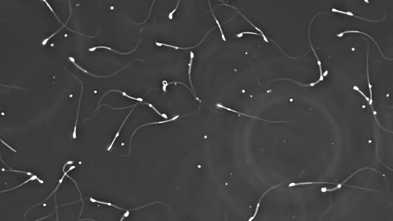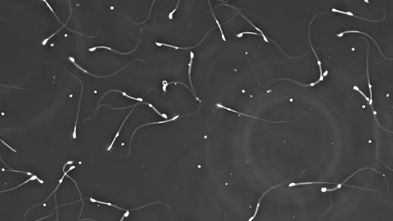Scientists are delving into the complex issue of male infertility, focusing on the role of environmental toxins, particularly PFAS, commonly known as “forever chemicals.” A recent study from the University of Newcastle highlights concerning trends in male reproductive health, revealing a significant decline in sperm production and testosterone levels in mice exposed to these chemicals.
Brett Nixon, a professor at the University of Newcastle, leads research that compares the sperm production of various species. His findings indicate that humans produce significantly less sperm than many animals. For instance, while rams can ejaculate around 100 billion sperm, men average just 100 million. Some species, like the fruit fly, produce sperm that is remarkably long, measuring about six centimeters. In mice, nearly all sperm produced is viable, contrasting sharply with humans, where only about 4 percent of sperm is properly shaped and functional.
Recent concerns have emerged regarding the alarming decline in human sperm counts, which some experts attribute to environmental factors such as air pollution and microplastics. The study conducted by Nixon’s team found that exposure to PFAS, at levels comparable to contaminated groundwater in Williamtown near Newcastle, resulted in reduced sperm production and testosterone levels in mice. Additionally, the research suggested that these chemicals might alter the epigenome of sperm, potentially affecting embryo development.
While the findings are significant, Nixon cautions that results cannot be directly applied to humans due to fundamental anatomical differences and variations in metabolism. Nonetheless, there is a growing body of observational studies linking PFAS exposure to lower sperm counts in human populations. Mixed evidence complicates the ability to draw definitive conclusions, but Nixon remains committed to exploring these relationships further.
“We want to look at humans and see whether the same sort of changes are occurring,” Nixon explains. However, ethical concerns prevent researchers from conducting randomized controlled trials involving PFAS exposure in humans, making it challenging to establish direct cause-and-effect relationships.
Nixon supports the so-called Sperm Count Decline hypothesis, which posits that sperm count and quality have decreased by more than 50 percent over the last five decades. This hypothesis is bolstered by influential meta-analyses led by Israeli epidemiologist Dr. Hagai Levine. Nixon emphasizes the urgency of this issue, stating, “The rate at which sperm count declines suggests this is not a genetic effect; it’s an environmental effect.”
The discourse on male infertility has gained traction with the work of Dr. Shanna Swan, Levine’s co-author, who has brought attention to these findings through her book, Countdown. Swan warns that by 2045, men’s sperm quality may decline to a point where most couples will need to rely on in vitro fertilization (IVF) to conceive. She attributes this potential crisis to endocrine-disrupting chemicals such as phthalates and BPAs commonly found in plastics.
As research continues, the implications of these findings extend beyond academic inquiry. The potential for a future where male fertility is significantly compromised raises pressing questions about public health and environmental regulation. Understanding the relationship between environmental toxins and reproductive health will be crucial in addressing the challenges posed by declining sperm counts and male infertility.


































































